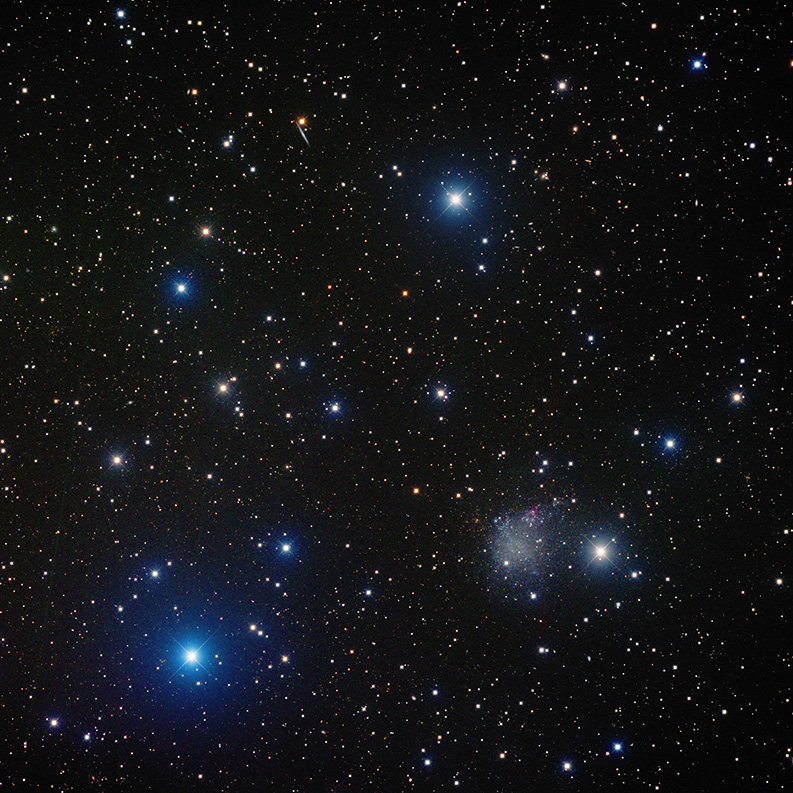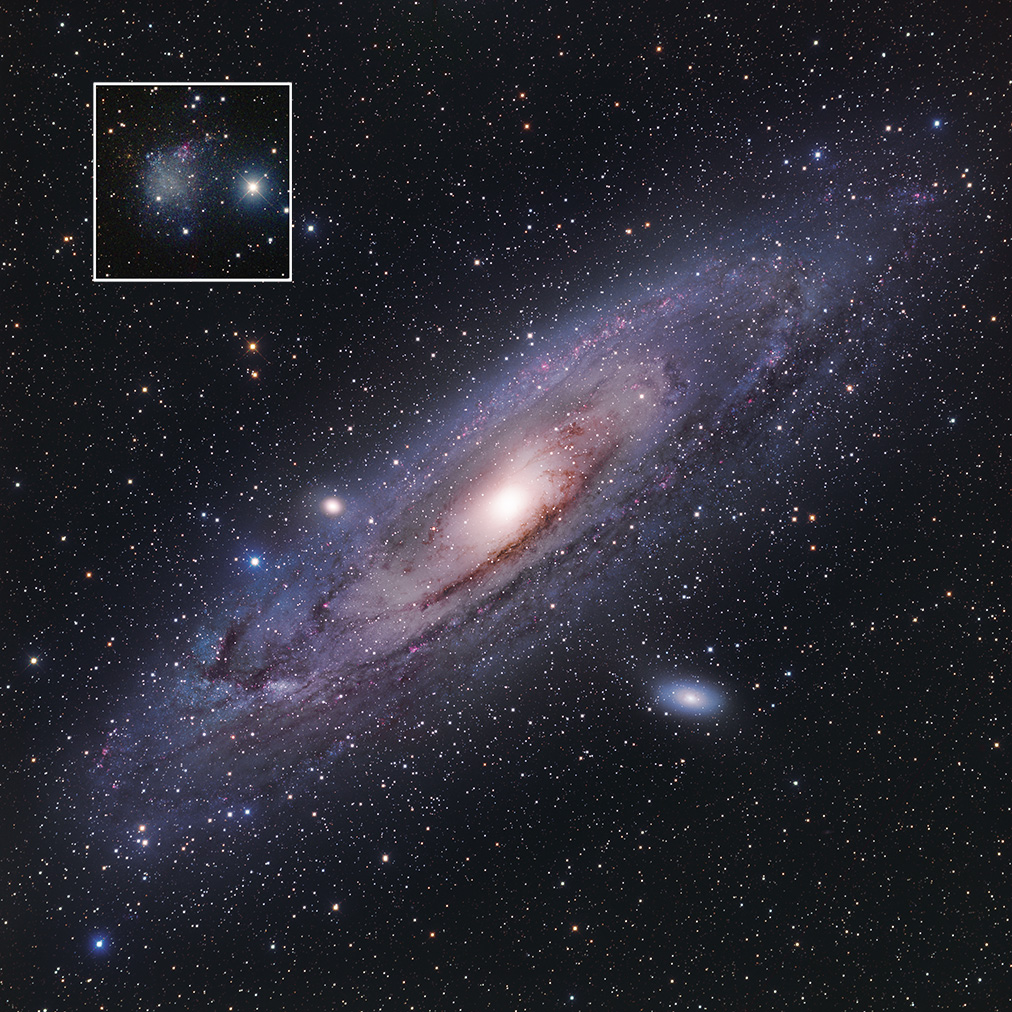Spring ushers in a sky almost completely devoid of anything other than galaxies. In this season, as we look upward from our northern hemisphere perch, we are looking out of our galaxy, perpendicular to its plane, through the few stars that stand between us and billions upon billions of galaxies. There’s little dust and gas to obscure our vision, and the blackness of the sky is because we can see all the way to the edge of the universe.

While we are familiar with the grand parade of nearby spiral galaxies like M31, the Andromeda Galaxy, and M51, the Whirlpool Galaxy, the majority of galaxies in the universe are much smaller and less organized affairs. Dimly let with relatively few stars, we can only see these galaxies well enough to study them if they’re close by. IC 1613 is such a galaxy. Classified as a Dwarf Irregular, it has almost no organization and at 11,000 light years across, is remarkably small. By comparison, our own galaxy is estimated to be in the vicinity of 53,000 light years across, and the Andromeda Galaxy is a whopping 110,000 light years in diameter.
Dwarf galaxies such as this one are relics from an earlier epoch in the evolution of the universe. Most of the stars in IC 1613 appear to be about seven billion years old, about half the age of the universe. These galaxies are the building blocks of the large galaxies we can see, being gravitationally incorporated over time. IC 1613 has avoided this fate, at least thus far, and because it’s situated nearby on a very clear line of sight, we can study it very carefully. Those studies have gauged its distance quite accurately at 2.38 million light years. This is about the distance of the Andromeda Galaxy.

IC 1613 is somewhat unique in that it does have an active starbirth region, visible as the red knot on the upper right edge of the galaxy. How any hydrogen gas has lasted this long in this galaxy is a matter of considerable curiosity. We can only conclude that even the most mundane of galaxies is capable of surprising us.
This image came about at the request of a friend of mine, who was doing a visual observing program that included this galaxy. She concluded it was not visible in any telescope she had access to, and questioned why on earth it would have been included in such a list! She asked me to take a picture of it, and when I did, I concluded the same thing. I don’t think there’s any way an amateur sized telescope could see this galaxy.
In spite of my friend’s lack of success with this galaxy, you can enjoy it in this calendar image. Imagine this is the most common type of galaxy in the universe, but beyond a few tens of millions of light years they’re just too small and faint to observe. Imagine that our sun possibly formed in a galaxy just like this, and was subsequently swept up into a growing mass of stars that eventually became the Milky Way. It’s entirely possible that we came from a galaxy much like this one!